Introduction to the Orthoptera and relatives
The Orthoptera is a relatively small insect order in Britain and Ireland, with only 32 native species, called crickets, grasshoppers and groundhoppers. Members of the Orthoptera have enlarged hind legs that enable them to jump long distances. The adults mostly have two pairs of long strap-like wings and can fly, but in some species the wings are reduced to small stumps. Many species make loud chirruping sounds by stridulation using serrated areas on the wings and/or legs. They undergo incomplete metamorphosis as they develop. The nymphs are smaller versions of the adult insects and gradually develop the wings as they pass through the nymphal stages. Orthoptera have strong biting mouthparts, usually considered close to the ancestral insect condition, and the group originated early, back in the Cargboniferous Period (350–300 million years ago). Most species feed on plant foliage but some crickets prey on other insects.
There are two groups of Orthoptera, the Caelifera which contains the grasshoppers, locusts and groundhoppers, and the Ensifera with the crickets and their relatives. These two groups can be distinguished by the length of the threadlike antennae. In grasshoppers and groundhoppers, the antennae are clearly shorter than the body length. Crickets have antennae that are at least as long as the body length and often longer.
Left: Typical grasshopper with relatively short antennae. Right speckled bush cricket with very long thin antennae
We have 16 species of crickets, 13 grasshoppers and three groundhoppers in Britain and Ireland. The grasshoppers in particular generally like long grass or quite dense vegetation, so are not very often seen in highly manicured gardens.
We have two pages on Orthoptera, covering crickets and grasshoppers and groundhoppers
"Orthopteroid" groups
A number of other orders of insects used to be included within the Orthoptera, sharing their biting mouthparts and incomplete metamorphosis. These are sometimes called the orthopteroids recognising they share distant affinity with the grasshoppers and crickets. The grouping includes the true Orthoptera, the Blattodea or cockroaches, the Dermaptera or earwigs, the Mantodea or praying mantises, and the Phasmatodea which contains the stick insects and leaf insects. There are two other minor orders not found in Britain and Ireland. We have pages on the Blattodea and the Dermaptera which occur in urban gardens.
Carnivorous praying mantises are not (yet) native to Britain and Ireland, but 18 species occur in southern and central Europe. The common European mantis Mantis religiosa is found in Belgium and throughout France up to the English Channel. There is some evidence that it is expanding its range north, with colonies in Germany, SE Poland, Latvia and Estonia. It may reach our shores as climate change increases, but individuals found in gardens are probably escapees from captivity.
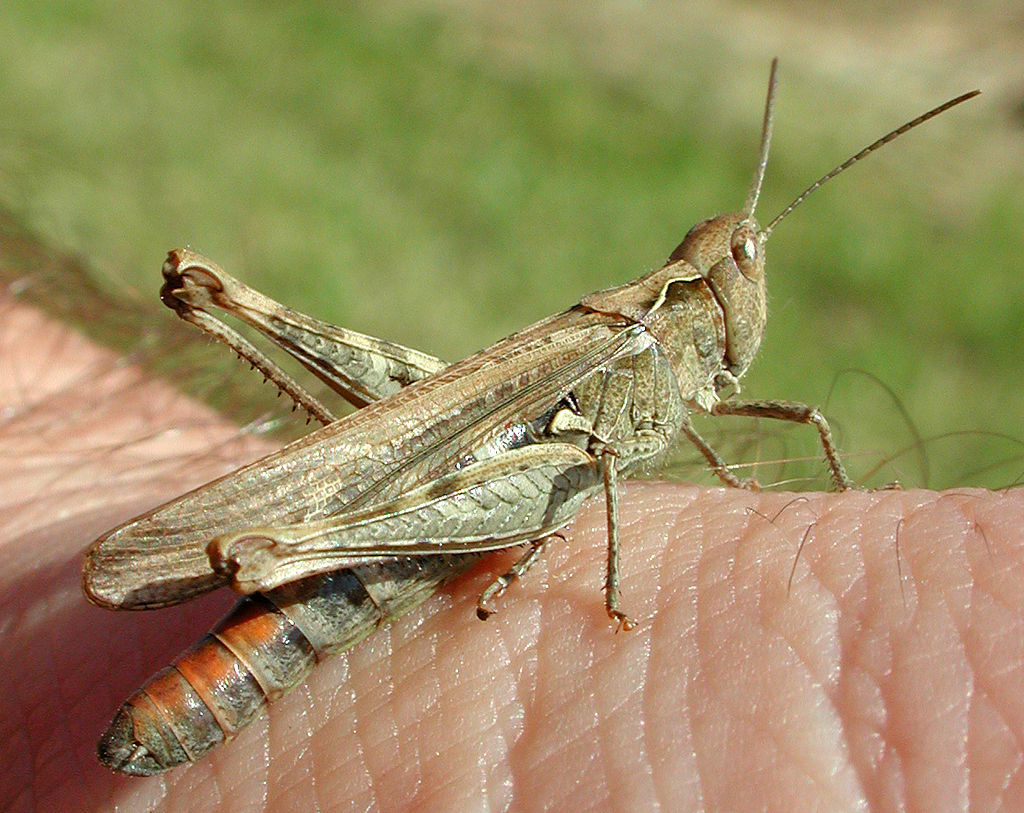
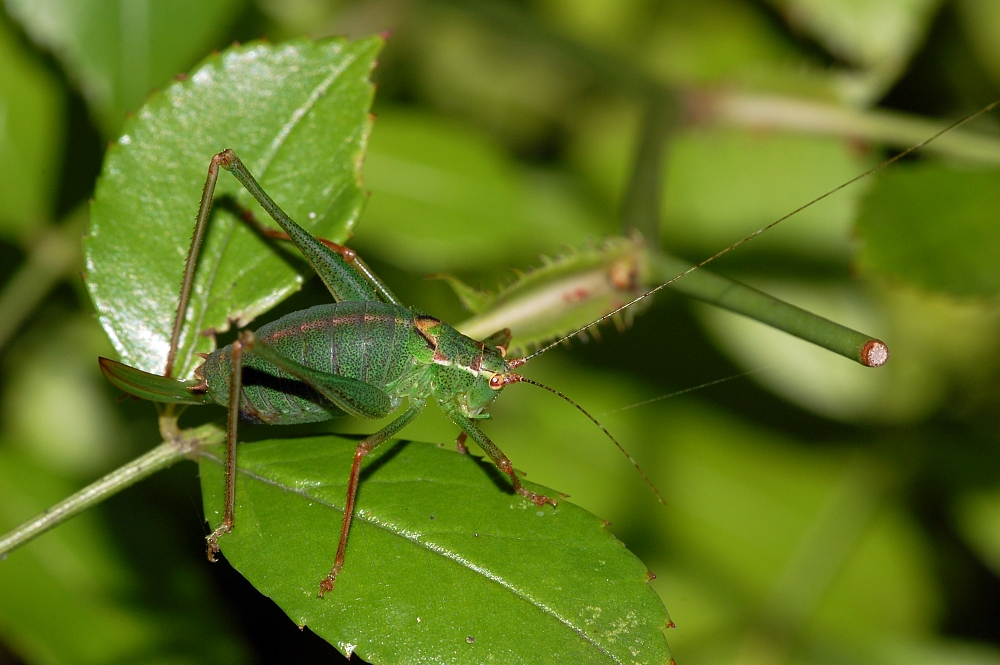
Outside these areas, garden stick insects are likely to be escapees. However they seem to be slowly spreading, and thers is a web site (below) where you can record sightings.
Other sources of information
Website
Website of the grasshoppers and allied insects recording scheme of Britain and Ireland
Identification guide to grasshoppers and crickets of the UK
UK Orthoptera Facebook Group
Website for reporting UK stick insects
Books
Bellmann, H. (1988) Field Guide to the Grasshoppers and Crickets of Britain and Northern Europe. Collins Field Guide Benton, T. (2012) Grasshoppers and Crickets Collins New Naturalist Library, Book 120
Marshall, J. A. & Haes, E. C. M. (1988) Grasshoppers and allied insects of Great Britain and Ireland. Harley Books
Page text drafted by Andrew Halstead, reviewed by Andrew Salisbury, compiled by Steve Head
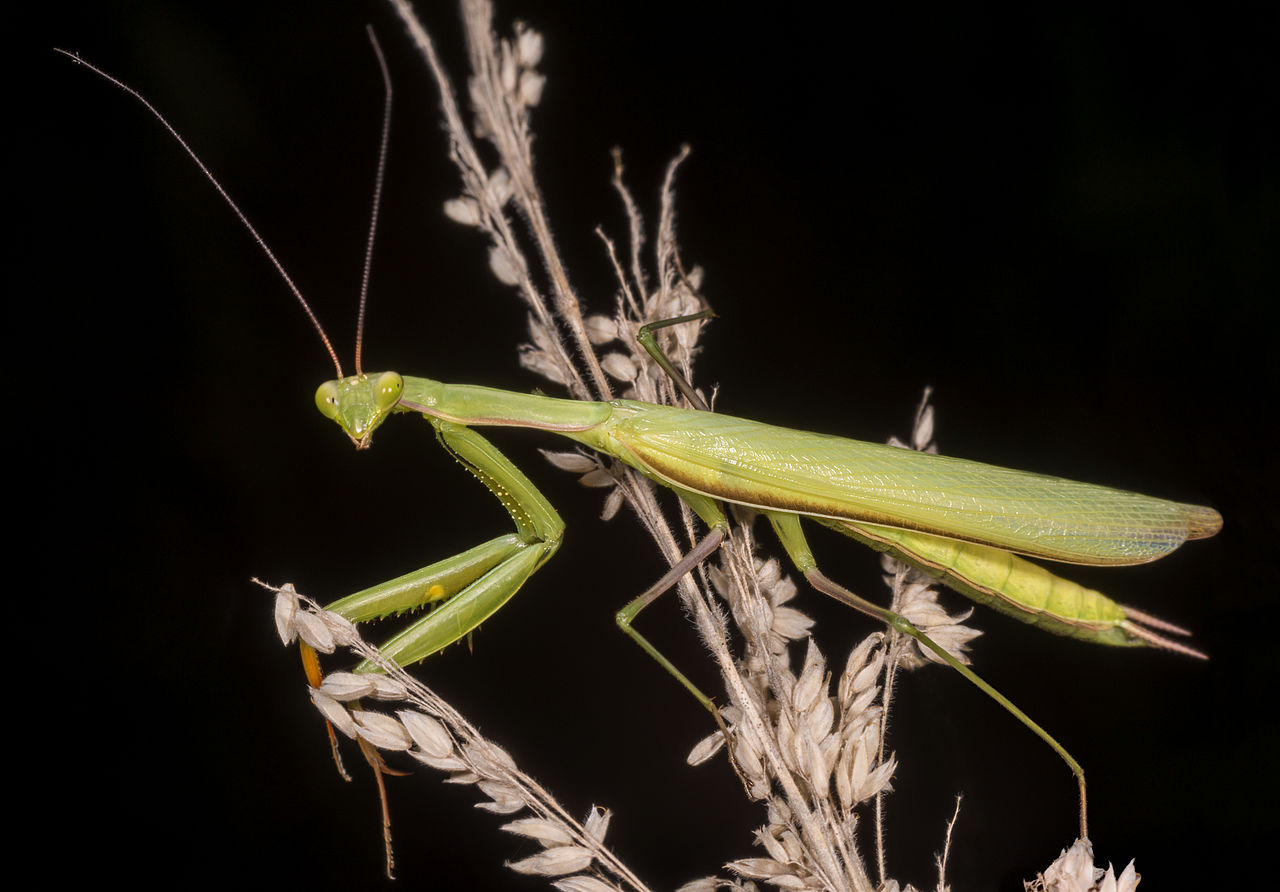
Mantis religiosa Left: male with slender abdomen. Right: female with large abdomen feeding on an insect
Leaf-eating stick insects are mostly subtropical and tropical in distribution, but several species are found in Southern Europe, and two of these, plus three exotic species, are established in Britain and Ireland. They are wingless, elongate insects, and generally reproduce parthenogenetically without males.
The Mediterranean stick insect Bacillus rossius has been found in gardens in Hampshire for ten years, and for longer in the Scilly Isles. White’s Sicilian stick insect Bacillus whitei is a similar southern European species with recently established colonies in gardens in Slough.
The prickly stick insect Acanthoxyla geisovii, unarmed stick insect Acanthoxyla inermis and the smooth stick insect Clitarchus hookeri are New Zealanders in origin, and the first two have been living in Cornwall and Devon gardens and hedges for over 100 years. In Ireland, the prickly stick insect has also been established in County Kerry and West Cork for over 100 years.
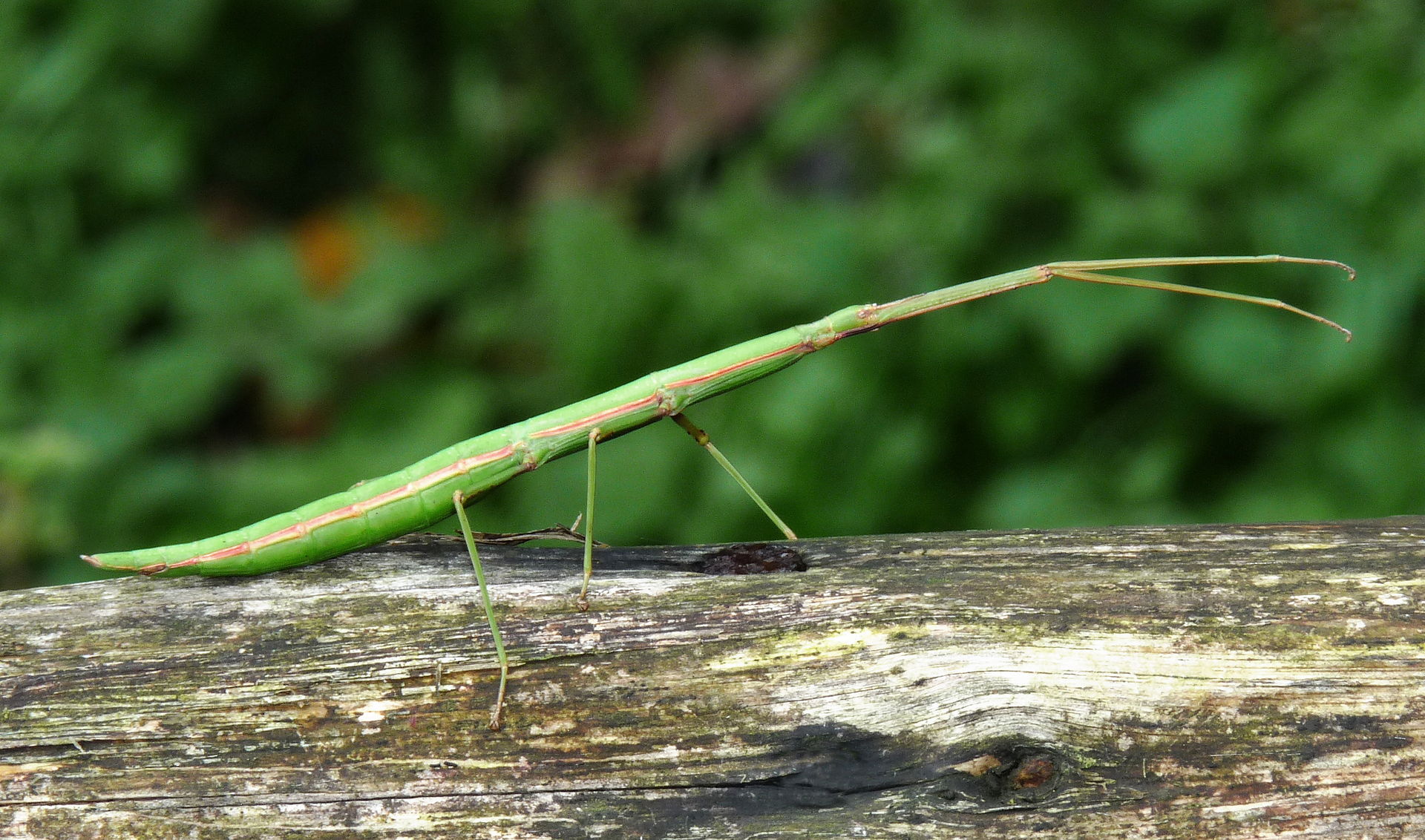
Mediterranean stick insect Bacillus rossius
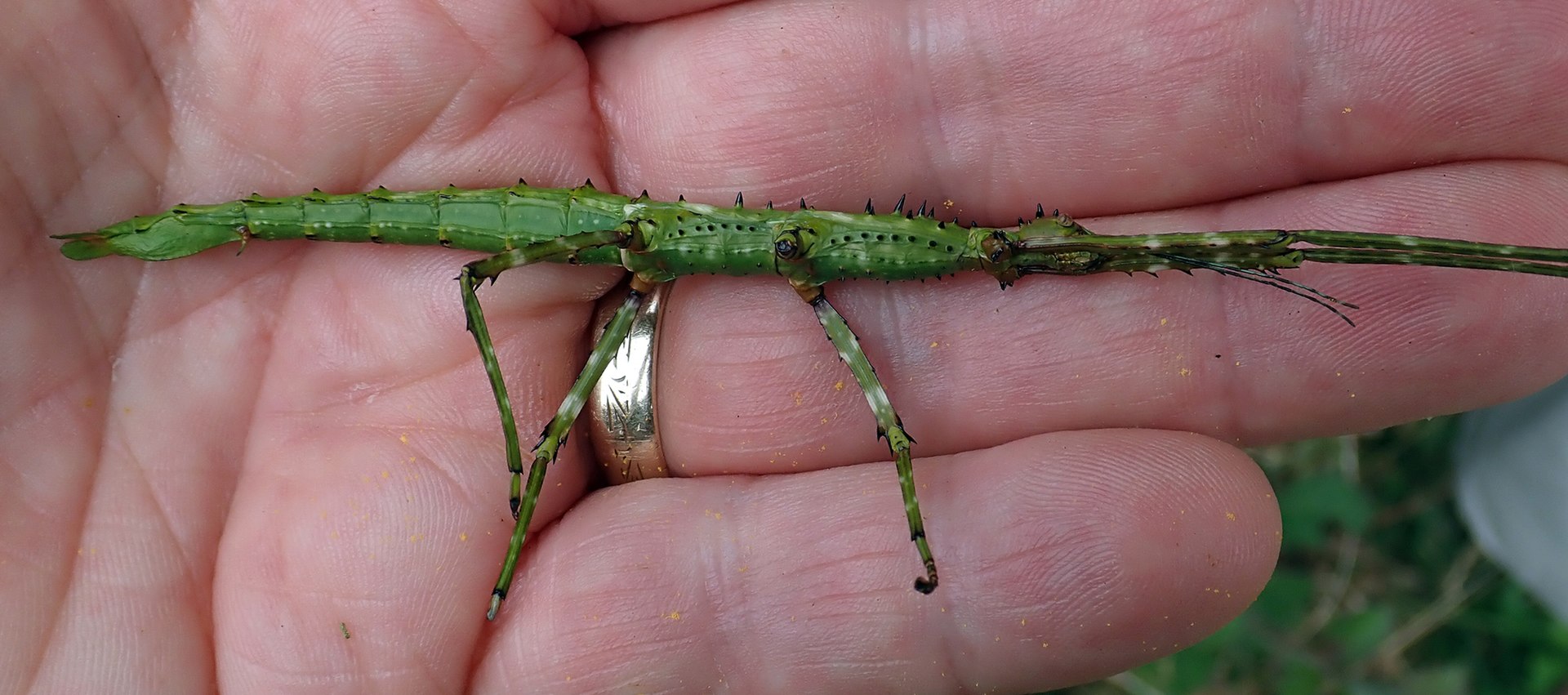
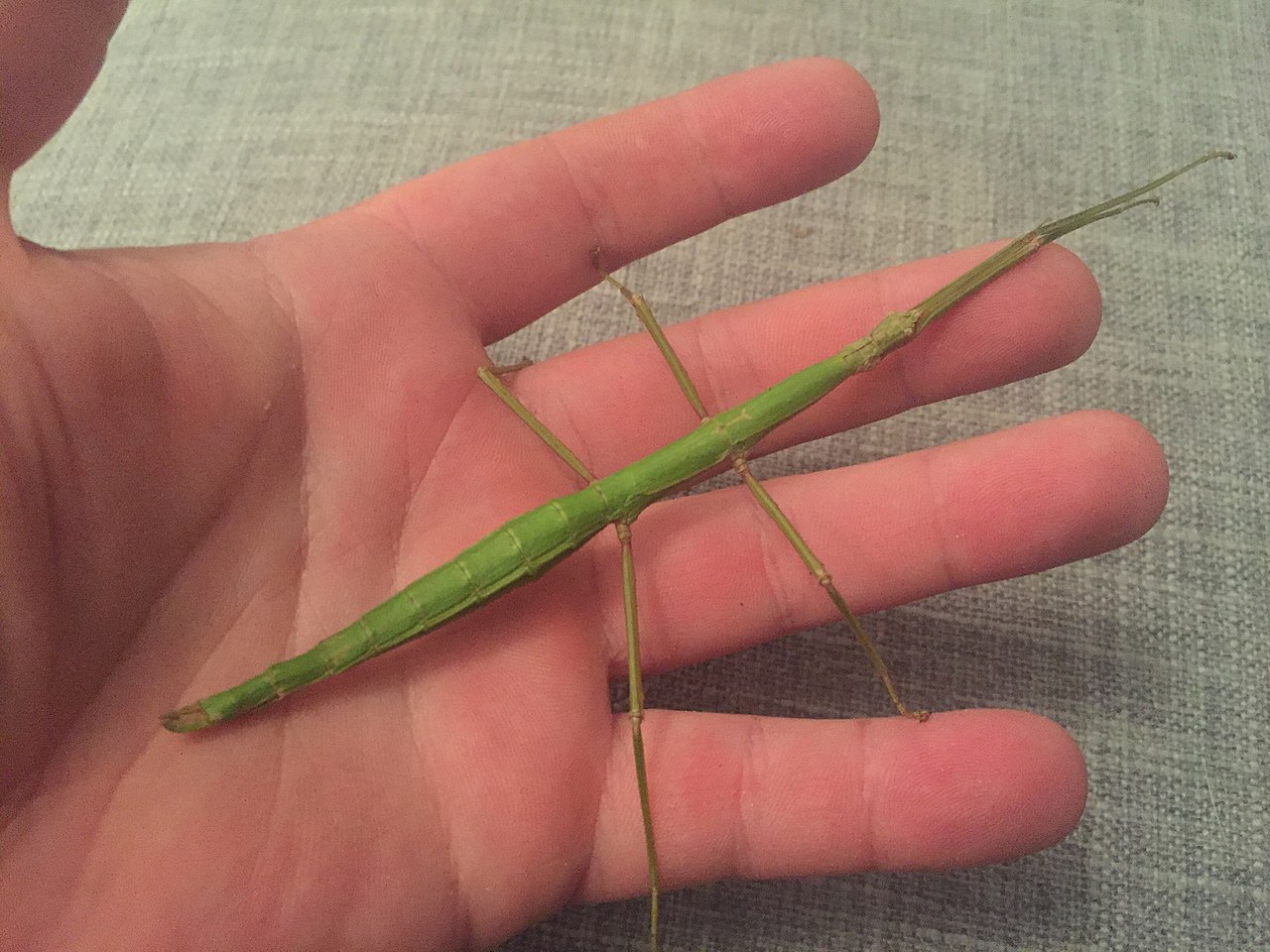
Above: The prickly stick insect Acanthoxyla geisovii
Left: Unarmed stick insect Acanthoxyla inermis
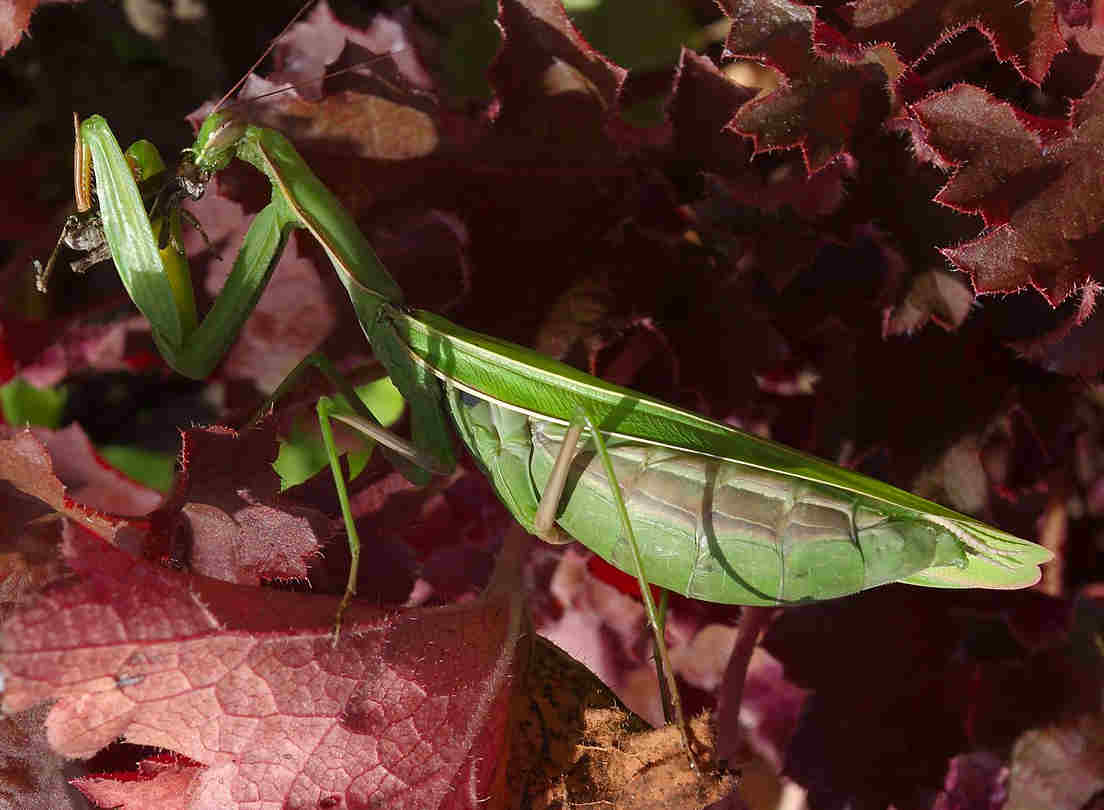
Introduction to the Orthoptera and relatives
The Orthoptera is a relatively small insect order in Britain and Ireland, with only 32 native species, called crickets, grasshoppers and groundhoppers. Members of the Orthoptera have enlarged hind legs that enable them to jump long distances. The adults mostly have two pairs of long strap-like wings and can fly, but in some species the wings are reduced to small stumps. Many species make loud chirruping sounds by stridulation using serrated areas on the wings and/or legs. They undergo incomplete metamorphosis as they develop. The nymphs are smaller versions of the adult insects and gradually develop the wings as they pass through the nymphal stages. Orthoptera have strong biting mouthparts, usually considered close to the ancestral insect condition, and the group originated early, back in the Cargboniferous Period (350–300 million years ago). Most species feed on plant foliage but some crickets prey on other insects.
There are two groups of Orthoptera, the Caelifera which contains the grasshoppers, locusts and groundhoppers, and the Ensifera with the crickets and their relatives. These two groups can be distinguished by the length of the threadlike antennae. In grasshoppers and groundhoppers, the antennae are clearly shorter than the body length. Crickets have antennae that are at least as long as the body length and often longer.


Left: Typical grasshopper with relatively short antennae. Right speckled bush cricket with very long thin antennae
We have 16 species of crickets, 13 grasshoppers and three groundhoppers in Britain and Ireland. The grasshoppers in particular generally like long grass or quite dense vegetation, so are not very often seen in highly manicured gardens.
"Orthopteroid" groups
A number of other orders of insects used to be included within the Orthoptera, sharing their biting mouthparts and incomplete metamorphosis. These are sometimes called the orthopteroids recognising they share distant affinity with the grasshoppers and crickets. The grouping includes the true Orthoptera, the Blattodea or cockroaches, the Dermaptera or earwigs, the Mantodea or praying mantises, and the Phasmatodea which contains the stick insects and leaf insects. There are two other minor orders not found in Britain and Ireland. We have pages on the Blattodea and the Dermaptera which occur in urban gardens.
Carnivorous praying mantises are not (yet) native to Britain and Ireland, but 18 species occur in southern and central Europe. The common European mantis Mantis religiosa is found in Belgium and throughout France up to the English Channel. There is some evidence that it is expanding its range north, with colonies in Germany, SE Poland, Latvia and Estonia. It may reach our shores as climate change increases, but individuals found in gardens are probably escapees from captivity.


Mantis religiosa Left: male with slender abdomen. Right: female with large abdomen feeding on an insect
Leaf-eating stick insects are mostly subtropical and tropical in distribution, but several species are found in Southern Europe, and two of these, plus three exotic species, are established in Britain and Ireland. They are wingless, elongate insects, and generally reproduce parthenogenetically without males.
The Mediterranean stick insect Bacillus rossius has been found in gardens in Hampshire for ten years, and for longer in the Scilly Isles. White’s Sicilian stick insect Bacillus whitei is a similar southern European species with recently established colonies in gardens in Slough.

Mediterranean stick insect Bacillus rossius
The prickly stick insect Acanthoxyla geisovii, unarmed stick insect Acanthoxyla inermis and the smooth stick insect Clitarchus hookeri are New Zealanders in origin, and the first two have been living in Cornwall and Devon gardens and hedges for over 100 years. In Ireland, the prickly stick insect has also been established in County Kerry and West Cork for over 100 years.


Above: The prickly stick insect Acanthoxyla geisovii
Left: Unarmed stick insect Acanthoxyla inermis
Outside these areas, garden stick insects are likely to be escapees. However they seem to be slowly spreading, and thers is a web site (below) where you can record sightings.
Other sources of information
Website
Website of the grasshoppers and allied insects recording scheme of Britain and Ireland
Identification guide to grasshoppers and crickets of the UK
UK Orthoptera Facebook Group
Website for reporting UK stick insects
Books
Bellmann, H. (1988) Field Guide to the Grasshoppers and Crickets of Britain and Northern Europe. Collins Field Guide Benton, T. (2012) Grasshoppers and Crickets Collins New Naturalist Library, Book 120
Marshall, J. A. & Haes, E. C. M. (1988) Grasshoppers and allied insects of Great Britain and Ireland. Harley Books
Page text drafted by Andrew Halstead, reviewed by Andrew Salisbury, compiled by Steve Head












